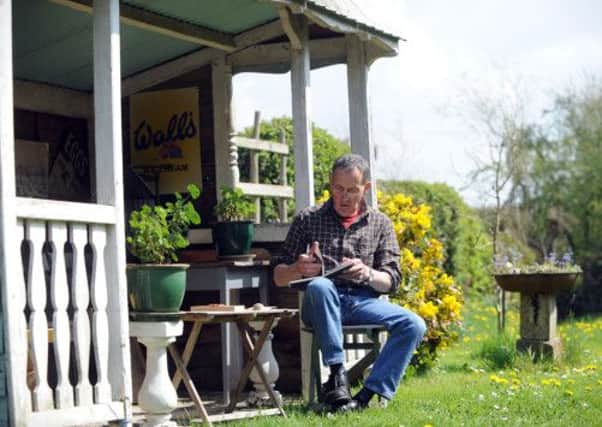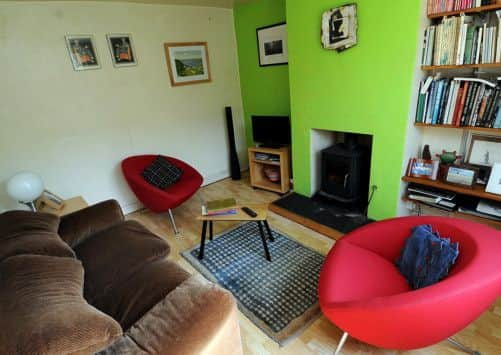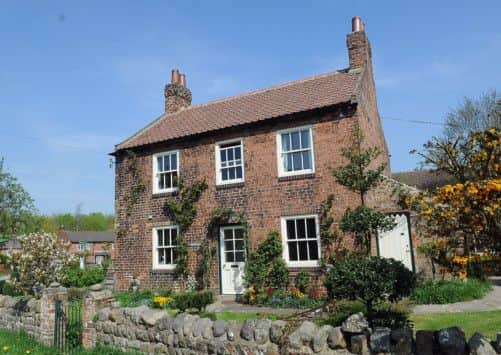Among the metal winners


Mod cons are all very well but the “must haves” for today’s fashionable country dweller are an old-style range cooker, preferably an Aga, and a proper pantry. When silversmith Chris Philipson moved to his cottage in the early 1970s it was blessed with both, though their practical significance was far more important than their looks.
The 1940s Stanclough range is still going strong, pumping out heat and slow cooking stews and porridge. The enormous pantry provides a fantastic storage space and cold store.
Advertisement
Hide AdAdvertisement
Hide Ad“The Stanclough has been great. In fact I’ve only just got central heating,” says Chris.


He and his late wife Pat found the property through friends who lived opposite the pretty, detached cottage, which is tucked away in a quiet village between Harrogate and York.
They began by renting it for £12 a week, which was good value though it was “pretty basic”, and later bought it.
“We were living in the south working for other people but we were keen to come back up north. I wanted to do some of my own work and the move offered me the chance to do that,” says Chris, who became “hooked on metal” while at Birmingham College and who refined his skills at the Royal College of Art.
Advertisement
Hide AdAdvertisement
Hide AdThe freedom to experiment with his own designs and techniques paid off and his work has flourished. He now creates everything from tableware and jewellery to weather vanes, which are something of a speciality.


He has also undertaken a number of important commissions for churches and castles, though his most prestigious was helping to create a new crown for the Prince of Wales. He is also a keen printmaker.
His first studio was a room in the house but he and Pat later converted an old cow shed into a workshop.
It is an enormous space full of work benches that were being thrown out of the art school in Harrogate, where he and Pat taught.
Advertisement
Hide AdAdvertisement
Hide Ad“We converted it ourselves, taking the cow stalls out putting windows in. We also got an old 1930s stove in that had been walled into the cellar at the art school,” he says.
A short commute across the garden takes him from work to home in seconds. The house has evolved over the years as his two children grew up, but it has always been a vibrant space.
When they first moved in Chris and Pat, a fashion and textile designer, began by taking down the wall between the back kitchen and a front room to create a large living kitchen. The old dining room was made into a pantry.
The kitchen units are a combination of handmade shelves and cupboards fashioned by Chris and his son Tom, a furniture restorer, and some free-standing Habitat furniture from the 1980s. The huge dining table came from a farm sale.
Advertisement
Hide AdAdvertisement
Hide AdLike many artists, Chris loves colour. The dining room is painted rich red though the idea came from a previous incarnation when the wall was covered in Christmas wrapping paper.
The brightest space in the house is the sitting room, which boasts a vivid green wall “that idea came from beech leaves,” says Chris, who prefers contemporary furniture to cottagey-style pieces.
The Arne Jacobsen chairs around the dining table are from The Home at Salts Mill and were chosen as their skinny legs don’t hide the original quarry tiled floor. The red chairs in the sitting room are from Artifort and the coffee table is by Tom
The house is full of work by Chris and his friends and former colleagues, including fellow printmaker Heather Foster. There is also a sizeable collection of ceramics, including plates by potter Dennis Farrell and printmaker Mark Hearld and pots by Peter Dick and Gordon Broadhurst.
Advertisement
Hide AdAdvertisement
Hide AdHis other main collection is outside in an old shed. He has been obsessed by old lawnmowers for from a young age and his earliest model hails from the 1860 – a hand pushed mower that wouldn’t cut muster in his own large garden, which he helped save from developers.
“The landlord wanted to sell it for housing but we managed to get preservation orders on the fruit trees in the orchard which was great,” says Chris, who built a pavilion in the garden with Tom’s help.
It’s a great place to sit and sketch out new ideas. Though his main inspiration is the landscape, he is also developing work inspired by wartime sea defence buildings. Some of these pieces feature in The Mighty Metalsmith exhibition at the Kath Libbert Gallery at Salts Mill.
“I am technically past retirement age but that’s the thing about being an artist and maker you don’t retire. You are compelled to keep making things.”
Advertisement
Hide AdAdvertisement
Hide AdChris’s work features in The Mighty Metalsmith decorative and domestic metal and silverware exhibition at the Kath Libbert Gallery, Salts Mill. Saltaire. The exhibition runs until July 7. For a full Mighty Metalsmith catalogue visit: www. kathlibbert jewellery.co.uk/themighty metalsmith